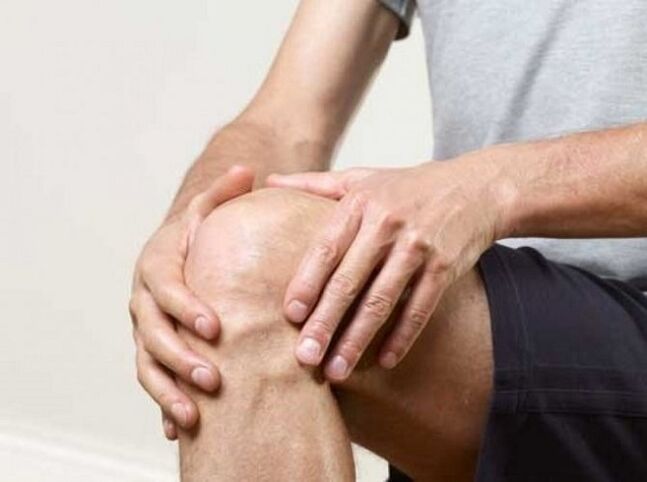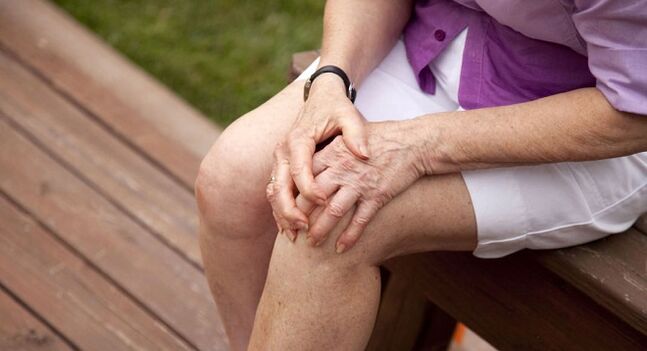
There are two enemies that prevent all the joints in the human body from functioning fully. These are osteoarthritis and arthritis, although they are similar in name, they are two different pathological processes that affect the cartilage tissue of the joints. Below we will look at how osteoarthritis differs from arthritis.
As you know, cartilage provides the work of the joints. Cartilage is strong and durable due to the lack of blood vessels and nerve endings. This reduces stress in the tissues where the capillaries or nerve fibers are located.
When a person is in motion, the cartilage tissue in the joint cavity promotes painless, unobstructed rotation of the bone heads, thus preventing the joint from being damaged by friction. Jumping softens the cartilage load during walking, performs the function of shock absorption.
Osteoarthritis and arthritis lead to stiffness in the joints, which prevents a person from leading a normal life due to limited mobility. There are a number of symptoms that are similar to the two diseases, but there are many other symptoms that are radically different.
Physiological processes caused by arthritis
The first sign of the disease is pain in the joints. With arthritis, the process of inflammation of the cartilage tissue begins.
Arthritis affects the joint:
- joint capsule;
- synovial fluid that lubricates and nourishes tissues and joint space;
- located along the edges of the synovial membrane.
Patients diagnosed with arthritis most often complain of pain and joint stiffness. The inflamed area turns red and the temperature rises even at the site of arthritis or polyarthritis. In some cases, the pain syndrome is also felt in other joints of the arms or legs.

Swelling of the external tissues of the joint is a symptom that worries the patient in the presence of arthritis and polyarthritis.
However, despite the reduction in function, deformation of the structure does not occur. Arthritis causes the appearance of an inflammatory process of cartilage tissue triggered by trauma, infection, or metabolic disease. The disease is completely curable, but only if the patient follows the doctor's recommendations during treatment and does not use untested folk remedies for arthritis. If this process is allowed to continue, the disease will lead to joint degradation.
Physiological processes caused by osteoarthritis
The presence of osteoarthritis or spondyloarthritis causes pathological processes in the joint space. Because there are no vessels in the cartilage tissue, it is nourished by synovial fluid, which contains many elements.
As a person gets older, the metabolic processes in his body begin to slow down, resulting in poor nutrition of the cartilage, which leads to its deterioration.
Cartilage with various arthrosis becomes thinner and can not cope with the functions of the shock absorber. For this reason, patients begin to feel pain syndrome when the joint is involved.
In this case, it makes no sense to take anti-inflammatory drugs for osteoarthritis, because there is no inflammatory process. This disease occurs in older people. Its formation is influenced by a person's lifestyle. Those who eat properly, lead a healthy lifestyle, osteoarthritis, as a rule, do not appear.
In addition, another factor that distinguishes arthritis from osteoarthritis is that, unlike the first, the second disease is edema, the absence of redness of the tissues.

In addition, osteoarthritis is characterized by the impact on a particular joint. If it affects one joint in one arm, it will not affect the other. It often occurs in large joints such as the thighs or knees.
Different and similar features of diseases
Similar symptoms:
- in the morning a person feels numbness and stiffness in the joint;
- loss of full limb movement;
- pain when moving the affected joint.
These are the symptoms of the two diseases, but the pain is different, the place of occurrence, the duration of the sensations are different. As a rule, the doctor relies on these indicators when making a diagnosis.
Differences between osteoarthritis and arthritis
- With arthritis at the site of the affected joint, there is an increase in skin temperature, a process that causes inflammation. However, with osteoarthritis, this symptom is absent, although the degenerative process continues.
- Arthritis causes swelling of the upper tissues, with the second disease this symptom is absent.
- Polyarthritis due to inflammation, the presence of arthritis can cause subcutaneous nodules. Such symptoms are not specific to osteoarthritis.
- Arthrosis causes a deformity in the joint and will not work if left untreated (ointments are used for osteoarthritis or other methods). The presence of polyarthritis or arthritis does not cause deformity.
- Due to inflammation in arthritis, the skin in the affected area becomes redder. The second disease does not change the color of the skin.
Similar symptoms and their differences
There are a number of nuances that can be diagnosed when studied. Symptoms with individual and similar symptoms will be described below.
Painful feelings
As mentioned above, pain syndrome occurs in both diseases. However, arthritis should be characterized by the presence of inflammation that causes pain. The nature of the pain is acute and can appear even at night or immediately after waking up.
Many people exacerbate the situation when they use a new miracle cream or a tool advertised on the Internet to treat polyarthritis. Any good doctor will tell you that you cannot prescribe arthritis treatment independently.
In connection with osteoarthritis, pain occurs due to the breakdown of cartilage tissue, resulting in inability to reduce the load. In the absence of amortization, the bone apparatus is damaged.
A person feels a sharp pain after long walks or while doing exercises that put a load on the joint. When the disease first appears, the patient may feel a slight discomfort, but as the disease progresses, the condition worsens. In this case, you only need to take pills or other medications for osteoarthritis, the treatment should be comprehensive and carried out under the supervision of a physician.
Deformation process
Both diseases can change the structure of the joint. Arthritis is characterized by external physiological changes seen on visual inspection: increased local temperature, redness, swelling and the formation of nodules.
Often accompanied by arthritis: weakness, increased sweating, psoriasis. Only certain types of arthritis can cause a change in joint structure - these are osteoarthritis and traumatic arthritis.
Arthrosis is a more insidious disease because it does not manifest itself abroad. However, active tissue deformation occurs in the joint space. Cartilage becomes thinner, and as a result, bone tissue is subjected to unusual stress.
Inflammation
Swelling appears in the joint area affected by arthritis. This is due to an inflamed synovial film located in the middle of the capsule. Increased leukocyte levels are found when examining the patient's analysis. As a rule, the presence of infection or damage causes an inflammatory process.
Osteoarthritis does not cause an increase in leukocytes because there is no inflammation. The process of degeneration begins gradually, and often a person does not see any symptoms.
Click and crisis
A sign of osteoarthritis is a bruise on a painful joint. This is due to the wear and tear of cartilage tissue that causes pain during the interaction of bone tissue. However, wheezing does not always indicate the presence of a disease, and a healthy person can hear the clicks. With osteoarthritis, the sound will be rough and dry.
There is no crisis with arthritis, because as a result of inflammation, the joint swells and can not move fully, the cartilage tissue performs its functions.

Joint mobility
Both of these diseases have a common symptomatology because they limit the mobility of the joints. But the reasons for the severity are different.
With osteoarthritis, the decrease in motor activity of the joint is due to thinning of the cartilage tissue, but there is no such symptom at the beginning of the disease. In arthritis, stiffness is caused by inflammation and is widespread. The joint is completely paralyzed.
General and specific causes
Common causes of illness are injuries sustained by a person while running or jumping. Regular and heavy loading of the joint can also cause this. For this reason, the disease is most common in professional athletes. Another cause is severe or frequent hypothermia, which often occurs in the joints of the limbs.
Arthritis occurs as a result of inflammation caused by the appearance of an infection in the body; this is not typical for osteoarthritis. Since inflammation is a process of the whole body, arthritis is only one consequence. To treat the disease, it is necessary to find the cause of the inflammatory process and eliminate it. Being overweight can also cause arthritis because it puts stress on the joints. In this case, the joints of the lower extremities and the musculoskeletal system are at risk.
Osteoarthritis is a separate disease, because this process has nothing to do with the general condition of the body. The reasons for its appearance are hidden in the substances that enter the body in small amounts due to improper nutrition. Bad habits, such as smoking and alcohol abuse, can also cause illness. Often the appearance develops with diseases of the circulatory system and hormonal disorders. According to statistics, mostly older people suffer from osteoarthritis.

Who is at risk
A person of any age is susceptible to arthritis. Infection also affects babies. According to statistics, women are more likely to suffer from arthritis.
When it comes to osteoarthritis, older people suffer from it. As a rule, the deformation of the structure of cartilage tissue begins after the age of 60 years. The fact is that the older a person is, the slower the metabolic processes in the body, the more it is affected by a person's lifestyle. By the way, arthritis patients are more susceptible to osteoarthritis.
The risk group includes people with bad habits, regular physical activity and poor eating.
Common in the treatment of arthritis and osteoarthritis
In part, the same measures are taken to treat these diseases:
- the patient should exclude any stress, establish a frugal regimen;
- take medications that restore cartilage volume and nourish;
- exercise therapy with massage to improve metabolic processes in the body and blood flow to the diseased joint;
- use of painkillers to relieve pain;
- the doctor prescribes intra-articular blockade in the form of injections;
- oxygenation of the joint;
- The patient goes through a complex diet.
Treatment varies, especially in the course of antibiotics for infectious-type arthritis to treat the underlying cause of the disease.
As the stage progresses, they resort to surgery as a treatment. This need arises when the cartilage tissue is completely destroyed. In this case, the prosthetic joint is installed.























